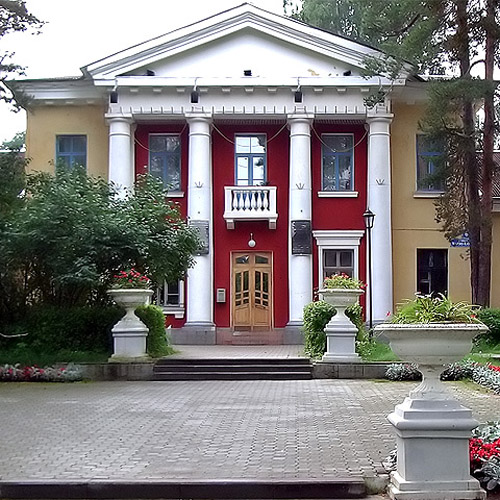Moscovium
115
Mc
Grupp
15
Period
7
Block
p
Protoner
Elektroner
Neutroner
115
115
173
Generella Egenskaper
Atomnummer
115
Atommassa
[288]
Masstal
288
Kategori
Posttransitionsmetaller
Färg
Ej tillämplig
Radioaktiv
Ja
Named after Moscow Oblast where Dubna is located
Kristallstruktur
Ej tillämplig
Historia
Moscovium was identified in 2004 by a team composed of Russian scientists at the Joint Institute for Nuclear Research in Dubna, and American scientists at the Lawrence Livermore National Laboratory.
The team reported that they bombarded americium-243 with calcium-48 ions to produce four atoms of moscovium.
These atoms decayed by emission of alpha-particles to nihonium in approximately 100 milliseconds.
The team reported that they bombarded americium-243 with calcium-48 ions to produce four atoms of moscovium.
These atoms decayed by emission of alpha-particles to nihonium in approximately 100 milliseconds.
Elektroner per skal
2, 8, 18, 32, 32, 18, 5
Elektronkonfiguration
[Rn] 5f14 6d10 7s2 7p3
Moscovium is historically known as eka-bismuth
Fysikaliska Egenskaper
Aggregationstillstånd
Fast
Densitet
- g/cm3
Smältpunkt
-
Kokpunkt
-
Smältvärme
Ej tillämplig kJ/mol
Ångbildningsvärme
Ej tillämplig kJ/mol
Specifik värmekapacitet
- J/g·K
Förekomst i jordskorpan
Ej tillämplig
Förekomst i universum
Ej tillämplig

Bildkrediter: Wikimedia Commons (Hrustov)
Grundämnet upptäcktes vid Förenade institutet för kärnforskning i Dubna, Ryssland
CAS-nummer
54085-64-2
PubChem CID-nummer
Ej tillämplig
Atomära Egenskaper
Atomradie
-
Kovalent radie
162 pm
Elektronegativitet
-
Jonisationspotential
-
Molvolym
-
Värmeledningsförmåga
-
Oxidationstillstånd
1, 3
Användningsområden
Moscovium is used for scientific research purposes only.
Moscovium is harmful due to its radioactivity
Isotoper
Stabila isotoper
-Instabila isotoper
287Mc, 288Mc, 289Mc, 290Mc, 291Mc